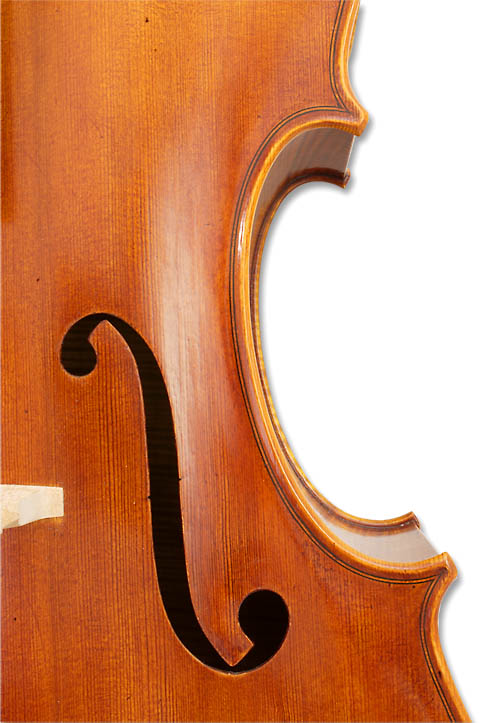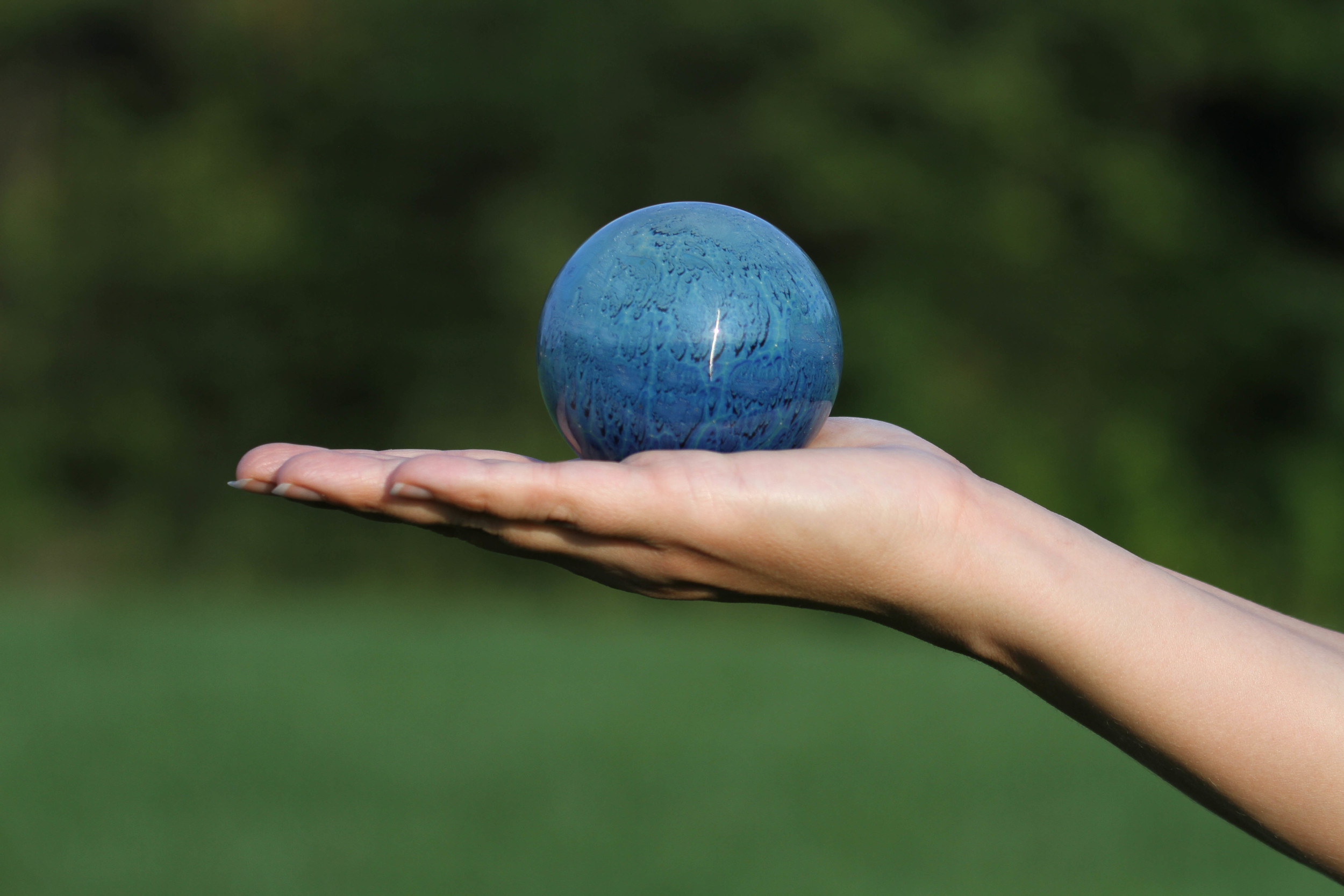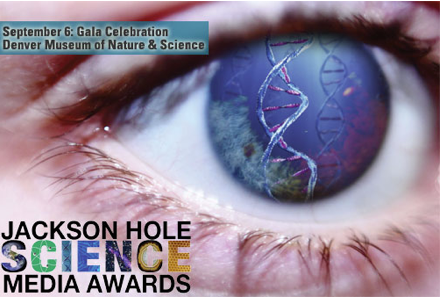No matter how big the movie, the stage play, the broadcast, or book release, work is always ephemeral, like life itself. The play’s the thing precisely because the action of life only struts and frets for a moment upon the stage. It’s like a love affair; it’s like a perfectly prepared meal; it’s like a long-planned vacation, or even time spent growing up in one’s family home. The feelings may run deep, but the only thing that lasts are shared memories.
Read MoreSpecial Announcement: NAVIGATING THE CURVE -- Now Showing!
A new documentary about life under the corona virus captures voices from around the country with stories of resilience, creativity, and resolve. Called “Navigating the Curve”, the film showcases fresh perspectives on the emerging crisis with intimate first-person accounts of life suddenly and unexpectedly transformed. The 44-minute production appears online. (URL HERE)
Read MoreOne crane among many
WATER FALLS: THE DAY IT RAINED
THE DAY IT RAINED
This week's blog post was going to be something of a fist pump, a shout-out, a cheer. But life is what happens after you make plans.
This Thursday evening at The Space Foundation in Colorado Springs was supposed to be a sparkling world premiere for our newest movie called WATER FALLS. Hands down the most complex, sophisticated spherical movie ever made, I think I speak for all those who worked on it when we say we were geeked to release it into the world.
But the government shutdown changed things. WATER FALLS was commissioned by NASA; it's a NASA project, about a NASA mission. As a part of the federal government…well, you can see where this is going. The premieres at The Space Foundation and then again two days later at The Wild Center in upstate New York have been cancelled. Cause? The government shutdown. Without a functioning government, NASA cannot engage in active release of media products, even if made by contractors.
But let's not dwell on things we cannot control. WATER FALLS is beautiful! It's the most recent in a string of spherical movies we've made, dating back to the world's first in 2006. Making movies for spheres is not like making rectangular movies just wrapped around a curved surface. Many of the fundamental rules of cinema go out the window. We've developed a substantial and rather radical list of our own photographic, animation, and production techniques, and ever time we get into one of these things there never seems to be any limit to what's possible. But that's the soul of the creative process, isn't it? There are always new vistas, new horizons, and new observations, even for the most familiar things in the world.
But you know what? Exasperated, frustrated, even (to be honest) a little MAD!…we're pros. The movie is finished, and even though it isn't going to be released with all the hoopla we hoped for, we look forward to the day when we can invite you to the show.
And hey, guess what? 1AU is a busy place these days, with new, exciting projects in the hopper and lots of dynamic, creative energy bubbling. Here on the blog you can always expect to find ideas and inspirations about the creative world, as well as news of our latest public exploits, of course. We're working on great new pieces with all sorts of exciting potential, and we look forward to sharing news as they develop.
We'd love to hear from you, too. Have questions or thoughts about WATER FALLS? Drop us a line! Have questions or ideas about media or communications projects you're thinking of pursuing? Visit our contact page or write to us at
info@1auglobalmedia.com
Get in touch and let your ideas…go farther.
--MS
Twitter @michaelstarobin Facebook facebook.com/1auglobalmedia
Sphere blueprint
COMING SOON: WATER FALLS
This week we're focusing on some production news from the team at 1AU Global Media. As many of our loyal readers know, we do a lot of work for NASA, and this fall marks one of the most substantial projects we've ever designed for the Space Agency. It's called WATER FALLS, and it's coming to Science On a Sphere theaters around the world in just a couple of weeks.
If you aren't familiar with it, Science On a Sphere is a remarkable video playback technology developed by NOAA. It presents still and moving images on a completely round screen, viewable by anyone in the room. The team at 1AU is one of the world's most experienced and most successful in producing movies for this extraordinary surface. (You can see a number of examples in our demo reel.) Our first movie called FOOTPRINTS was named one of Time Magazine's best inventions of the year.
On October 10th of this year our latest film will debut. WATER FALLS opens at a world premiere party at The Space Foundation in Colorado Springs, Colorado, followed two days later by a launch event at The Wild Center in Tupper Lake, New York. Immediately following these events, the movie moves into the public domain, released worldwide to the sphere community. NASA commissioned the movie to engage audiences with the upcoming launch of one of it's largest Earth science missions ever. Called Global Precipitation Measurement, or GPM, the multinational research initiative will study global precipitation worldwide. As precipitation is a key aspect of the world's water cycle, as well as circulation of energy in the atmosphere, GPM promises to gather vital data about major aspects of Earth's changing climate.
We're breaking ground with the release of WATER FALLS. The movie will demonstrate new live action shooting techniques, animation techniques, editing solutions, all wrapped in a muscular storytelling wrapper. The movie will also be released with a thorough set of educational materials, a robust website and more.
Want to see it? You can find a complete list of theaters on the official website, and of course there's a social media component, too. The movie's Twitter hashtag is #waterfalls, and you can keep up with the NASA mission it's about at #GPM. Expect to see more about the movie's release in this space in the next few weeks.
Spherical surfaces are striking and beautiful and useful in all sorts of compelling ways, from movies to video signage to fine art and more. But spheres are only one part of our portfolio. If you're interested in exploring how we can make something spectacular for you, get in touch, and let your ideas…go farther.
--MS
PS I tweet from time to time. You can follow me @michaelstarobin if you'd like to see what I'm thinking about.)
PPS We also have a Facebook page. Visit (and "like us") at facebook.com/1auglobalmedia
PPPS Like this whole blog thing? Like what it does for your day? Do you ever mention ideas you encounter in this blog to someone else in your life? If so, share the link! Sure, it sounds like a ploy for free, crowd-sourced advertising, and guess what: it is! If you do spread the word, we'll simply appreciate. We might even bake you a batch of your favorite cookies. (Just ask!)
KEEPING TRACK OF IT ALL
 Plenty of non-artists have this problem, but every artist I know has this problem: we have too much stuff. I'm not talking about those stacks of aging Fantastic Four comic books that you refuse to give up. I'm not talking about those favorite t-shirts you should have tossed years ago. I'm not even talking about your own works in progress. I'm talking about the raw, random, chaotic material that you're spewing out, all the time, before it's found its way into new projects.
Plenty of non-artists have this problem, but every artist I know has this problem: we have too much stuff. I'm not talking about those stacks of aging Fantastic Four comic books that you refuse to give up. I'm not talking about those favorite t-shirts you should have tossed years ago. I'm not even talking about your own works in progress. I'm talking about the raw, random, chaotic material that you're spewing out, all the time, before it's found its way into new projects.
What happens to all of the ideas, images, notes, scribblings, sketches, and inspirational bric a brac we generate in our creative lives? It piles up. Mounds and mounds of it accumulate, on the sides of our desks, on night stands, on the pads of paper we keep on kitchen counters, in the voice memos we frantically dictate to ourselves as we drive down the highway, promising ourselves we'll organize later, somewhere safer, somewhere smarter. This is the raw material from which we refine our most valuable work. This is the sugar cane for our rum. But in the great raw value of these unrefined scraps, the endlessly growing mass threatens to drown us. Beautiful sirens, these ideas pull us over the rails of our safe boats into churning waters of creative abandon. Keeping track is a fools errand, and yet without a way to keep track, there can never be a process for capturing inspiration. The process is like trying to keep track of a handful of valuable, rare, even magical leaves from a large healthy tree as it erupts year after year into cascades of new growth. The tree sends thousands and thousands of leaves tumbling to the ground. What happens to most? You know already: they turn brown, they they crack, turn to dust, disappear.
But once in a great while, a seed flies away in the mouth of a bird, or finds itself washed down slope in a rivulet of rain, where it takes root and catches the sun. If you make things for a living, you live, you breathe, your heart beats faster for this moment.
What I wish the universe would send me is a omnipresent creative valet, an assistant who's sole reason for existence would be to police all of the leptons, positrons, neutrinos, and rare, rare Higgs Bosons that skitter away from me all day long. Like those cascades of mostly irrelevant subatomic particles, like those rare and wonderful leaves from my tree, I'm fully aware that most are pure junk, creative flotsam ejected randomly as things collide, combine, cascade, and carom into the void. Yet even as I write this harsh, honest self assessment, I know that once in a great while…there's something I want to save and nurture.
Alas, I have no such cosmic valet. What to do?
People confront this problem in different ways. Some don't confront it at all. The thing about artists is that they're much more invested, compelled even, by the act of creating then they are in the act of archiving. This creates a classic library problem. A book or a database entry containing the secrets of eternal youth is useless if it's not easily found in the library. An idea without an index does not exist.
I have yet to find a trick that works perfectly. But that's not to say I don't have strategies. My number one strategy is to simplify my systems. Handwritten notes must ultimately find themselves into one single place in my office. The path to that messy, massive pile may be tortuous, but the ultimate destination does not change. My digital notes are broken into discrete directories, including projects that already have specific names, random ideas without further context, poems, books, screenplays, client projects, ideas for essays (like this one), and long duration research initiatives for indistinct goals. (Ugh! It's always a battle!)
Yes, I have my software tools, like Evernote and Stickies and all sorts of other apps and packages, and yes, they help me capture stuff to some extent. But there's no perfect solution. Having too many tools is a great way to acquire a new tool management problem. What's more, but a great technical solution that captures everything but delivers a hard-to-navigate system for downstream search and retreival is no solution at all.
It's interesting that this challenge is often one thing for artists, and totally different for the people with whom they live. Creatives generally do not have to struggle to generate material; they struggle to make sense of the material they create. Everyone else either learns to recognize the strange, sometimes obsessive ticks we have trying to capture our mental storms or they begin to regard us as peculiar, sometimes mildly pitiable oddities. (Or both.)
What I find matters most is that the process of personal idea management should not become it's own end point. There must be a middle path. Too much organizational detail curtails powers of perception. It's only unencumbered that we fully experience the world and make new connections. Too little organizational detail relegates us to undisciplined wannabes, flailing around in an ocean of random chatter and scraps.
Ironically, I believe it's this essential, middle way that's most risky, even as it's probably the only choice. While the extremes of organizational rigor may provide clearer signposts about personal goals, a successful creator must simultaneously risk being overwhelmed by rogue waves while also keeping the ship's deck squared away. Too much water washing over us can drown us; too much attention to being ship-shape desiccates all the passion from the journey. It's risky either way.
When the system works, winds whip hard and the spray stings, but ideas cascade, get captured, then coalesce. I've long since given up hope for an easy ride. But come to think of it, I don't think I ever signed on for one.
--MS
PS -- Like this? Like what it does for your day? Do you ever mention ideas you encounter in this blog to someone else in your life? If so, share the link! Sure, it sounds like a ploy for free, crowd-sourced advertising, and guess what: it is! If you do spread the word, we'll simply appreciate. We might even bake you a batch of your favorite cookies. (Just ask!)
THE SHOW
 If you do creative work of any kind, you've approached the moment of truth many times.
If you do creative work of any kind, you've approached the moment of truth many times.
Performance day. Delivery. Showtime.
Months of work across multiple departments compress into a single shiny point, a captured spark inside a gleaming stone.
It's always the same, and it's always different. By the time something is finally ready to leave the workbench, creators knows every single pixel, every sound, every explanation and justification and reason and inspiration behind every molecular detail in what's about to be revealed. On small projects the coalesced energy presses gently, urging enthusiasm. But on big projects, the potential energy grows exponentially. The coming kinetic release threatens to break on the shore of the event like a tidal wave, like the San Andreas fault growling to tip Los Angeles into the hungry sea.
Oh, Sweet Experience! There's no better teacher for managing the rolling deck of the boat than having brought many, many of them in to shore before. But that doesn't mitigate the buzz. And make no mistake: there's always a buzz.
Everything can go wrong. It's vastly challenging to predict every single eventuality you're likely to encounter on the day of a big show. No matter how much you like to think you leave nothing to chance, variables have a way of creeping in. Generally big performances do not happen in locations of your own choosing, or your own control. That's the biggest source of unexpected drama. You're also likely showing your work, whatever format it may be, to people who are not specialists in your field. You're not showing to other painters, nor dancers, nor even caring school guidance counselors who will clap enthusiastically for every single kid who gets up at the spring talent show to belt out a song. In the real world, your audiences demand something that wows 'em, that moves 'em, that makes 'em think their money was worth spending with you. But caution: if you're thinking you might get away with a Music Man moment, think again. You're not going to engender warmth simply because your clients will see themselves immediately reflected in their so-very-wise commissions. You're going to need much more than that, and flim-flam gets you nowhere. You have to deliver the goods, and you know it.
The great pianist Vladimir Horowitz once said, "If I don't practice for a day, I know it. If I don't practice for two days, my wife knows it. If I don't practice for three days, the world knows it." I've always regarded this as a cautionary tale from a performance master. Coasting on talent and experience is never enough. Preparation and practice makes all the difference in the world, and there's no getting around it. And if…IF…you should be so lucky as to have generated a good idea to work with along the way, well, that never hurts either.
Assuming you're serious about your craft, there always comes a day when what you're working on needs to get seen. Whether you've been commissioned by a big corporate client or you're working on your magnum opus of a novel, there always comes a time. Practice and preparation will get you far; they're essential, and deadly serious. Yet real life is not a practice run. Like Han Solo said, "Going against the living? That's something else." Expect to be scrutinized, expect to be cross examined, expect to be dissected in a million different ways. You may have been working on this thing, whatever it is, for months, but to your audience, it only lives for the few minutes they get to experience it, and they don't really care about how hard it was to create.
Everything can go wrong, perhaps. But everything can go right, too. Walk carefully but confidently. Answer questions, but don't defend positions. Own your creations, but be generous is sharing them. Because if you've been honest about the work all along, and it really is something of value, then your big performance--and that's what it always is: a performance--will be the vehicle that helps convey your vision to eyes that do not know what to expect. It's through those eyes that you have a chance to reach someone else meaningfully.
That's why this moment matters, because, as you know, the eyes are the gateway to the soul.
--MS
PS -- To our regular readers, please take 20 seconds (or thereabouts) and retweet, cross post, or otherwise pass the link for this blog and it's 1AU Global Media home onto your readers and friends! Call it karma, call it kismet: we'll just call it cool! Cool?
Soundstage, Autumn 2012
 Recently the 1AU Global Media team spent time surrounded by wide open spaces. That is, they were wide open spaces only after they went through our post-production pipeline, transforming green painted soundstage hardware into a fully imagined world. The photos here show a collection of snapshots from that production.
Recently the 1AU Global Media team spent time surrounded by wide open spaces. That is, they were wide open spaces only after they went through our post-production pipeline, transforming green painted soundstage hardware into a fully imagined world. The photos here show a collection of snapshots from that production.
But you're wondering, aren't you, "Who's it for?"
Ah, yes... Let's just say that we're pleased to add a major new client to our roster, a prestigious player with vision and influence. But hey: there are all sorts of cool things cooking here at 1AU! 2013 promises to bring new productions, big ideas, and lots of creative energy to projects of all shapes and sizes.
As you reflect on the year now drawing to a close, get in touch to discuss how we might transform your dreams for 2013 into fully realized worlds. Or, loyal readers, just get in touch! We love to hear feedback about our blog, our work, and the wider world of ideas. And we'd like to hear from you about yourself: about where you're headed and what you're wishing for in terms of helping convey messages that move your own audiences.
-MS
[flagallery gid=6 name=Gallery]
TIME TRAVEL
 I'm listening to a 70-year-old recording of a 300-year-old piece of music on a two-year-old computer. I thought I was working on this week's blog, but I guess what I'm really doing is time traveling.
I'm listening to a 70-year-old recording of a 300-year-old piece of music on a two-year-old computer. I thought I was working on this week's blog, but I guess what I'm really doing is time traveling.
For the first time in human history we're now in an era where a sort of time travel is commonplace. In Bach's Cello Suite #4 (BWV 1010), sound preserved by inky graphical notations scratched by quill pens on candlelit paper transforms into sound under the deft fingers of the great cellist Pablo Casals, seated decades ago in an entirely analog recording studio.
Those analog sounds are now traveling forward in time, long after Casals and the engineers around him and inevitable marketing department of his recording company have gone back to the Earth. Played on my twenty-first century electronic gizmos, the resonant sighs of his sculpturally human instrument are now digitized, even cleaned up, with tape hiss magically removed, newly balanced frequency responses added to the mix, and modern remastering polish applied over all, conferring nothing but freedom for the music to fill my room.
I have no idea if these words I'm writing will be read by anybody 300 years from now, although I have my suspicions. But the monumental efforts and inventions of those rare superhuman creators like Bach hundreds of years ago are now something of a cultural echo that continue to provoke thoughts here in the present. It's almost as if the echo comes first, as if we're hearing the sound of humanity's invention bouncing off walls from the past, before the vast numbers of humanity got born into comparative easy times for creating things. We select what moves us not only from the world around us, but from time, and even distant space. I live in 21st-century Maryland; Bach lived in 18th century Europe, Casals in 20th century Catalonia, Spain. There's no good reason we should be in communication at all except…there it is. Sure, the ideas in the thread-- Bach to Casals to me-- only move in one direction, but then the arrow of time also flies from the bow string in only one direction.
Everyone knows that our sneakers come from China, our grapes from Peru, our oil from the Gulf of Mexico. These are all expressions of our immediacy, are instantaneous ability to acquire precisely what we want and what we need. I realize this is an upper-class, first world observation; most the world needs much more than it receives, and certainly it receives much less than it wants. It would be callous to believe that first world cultural time travel was an entirely democratic phenomenon.
But as students of all ages now consider the ocean of educational options rolling in at their feet via online opportunities, it's essential to place the genesis of all these new ideas in the context of deeper time. None of us create anything just based on the experiences of our own lives. But as the ability to preserve ourselves is now easier, more powerful, more permanent than ever before, it's probably important to consider what kinds of echoes we may be leaving for students in some distant future to find.
Complacency in our digital assistants is a mistake. The fact that these extraordinary scores have survived across the centuries for me to hear Bach's musical transportations only amplifies the point. Imagine a world where those scores disappeared! Then realize that most of humanity's creative acts great and small have disappeared over the years for one reason or another, and it's becomes imperative to at least consider how our inspirations of today may be accessible to future generations, one way or another.
--MS
PS — Have something to say? Leave us a comment! Don’t want to miss the latest from 1AU? Sign up on our mailing list. (Cool email like ours is better than that boring stuff that clutters your inbox, right?) Consider yourself a fan? Please re-Tweet us, post to Facebook, or otherwise forward us to your friends. Cool? Yep: cool.
SPHERE TALK TODAY!
 A hundred million years from now, archaeologists will marvel at works like LOOP and wonder how they did it! But you don't have to wait until you're a fossil to find out. Vicky Weeks will present a special session at today's JHSM Symposium called DECONSTRUCTED: Science On a Sphere. Join her in the Africa Hall upstairs at the museum at 10:30, and then come downstairs to see our latest movie called LOOP, playing in competition this year. Questions or comments? Drop us a note!
A hundred million years from now, archaeologists will marvel at works like LOOP and wonder how they did it! But you don't have to wait until you're a fossil to find out. Vicky Weeks will present a special session at today's JHSM Symposium called DECONSTRUCTED: Science On a Sphere. Join her in the Africa Hall upstairs at the museum at 10:30, and then come downstairs to see our latest movie called LOOP, playing in competition this year. Questions or comments? Drop us a note!
Want a sneak peak? Check out the trailer to LOOP here.
[flagallery gid=4 name=Gallery]
LIVE FROM DENVER
This week we're in Denver for the 2012 Jackson Hole Science Media Symposium, and for those of you visiting the news section of our website for the first time, let's recap the headline. Our spherical movie called LOOP is an award finalist! Winners will be announced Thursday evening, September 6.

But competition notwithstanding, check back throughout the week for updates about our adventures in Colorado. Also, if you're in Denver for the Symposium (or even just for a visit to the Science Museum!) Vicky Weeks will be presenting a talk about LOOP and answering questions about making media for spheres at 10:30 on Thursday morning, September 6. The movie will be showing throughout the Symposium on the museum's Sphere, with a special showing scheduled in conjunction with Vicky's talk. We're confident this will be an event you won't want to miss!
Questions, comments? Stop and talk with us in Denver. Wishing you could go, but not likely to make it? Drop us a line! Spheres, rectangles, live events...hey: we do creative of all shapes and sizes! We're 1AU Global Media, LLC. With us your ideas...go farther.
Updates from Denver throughout the week...bookmark us and check back...
--MS



